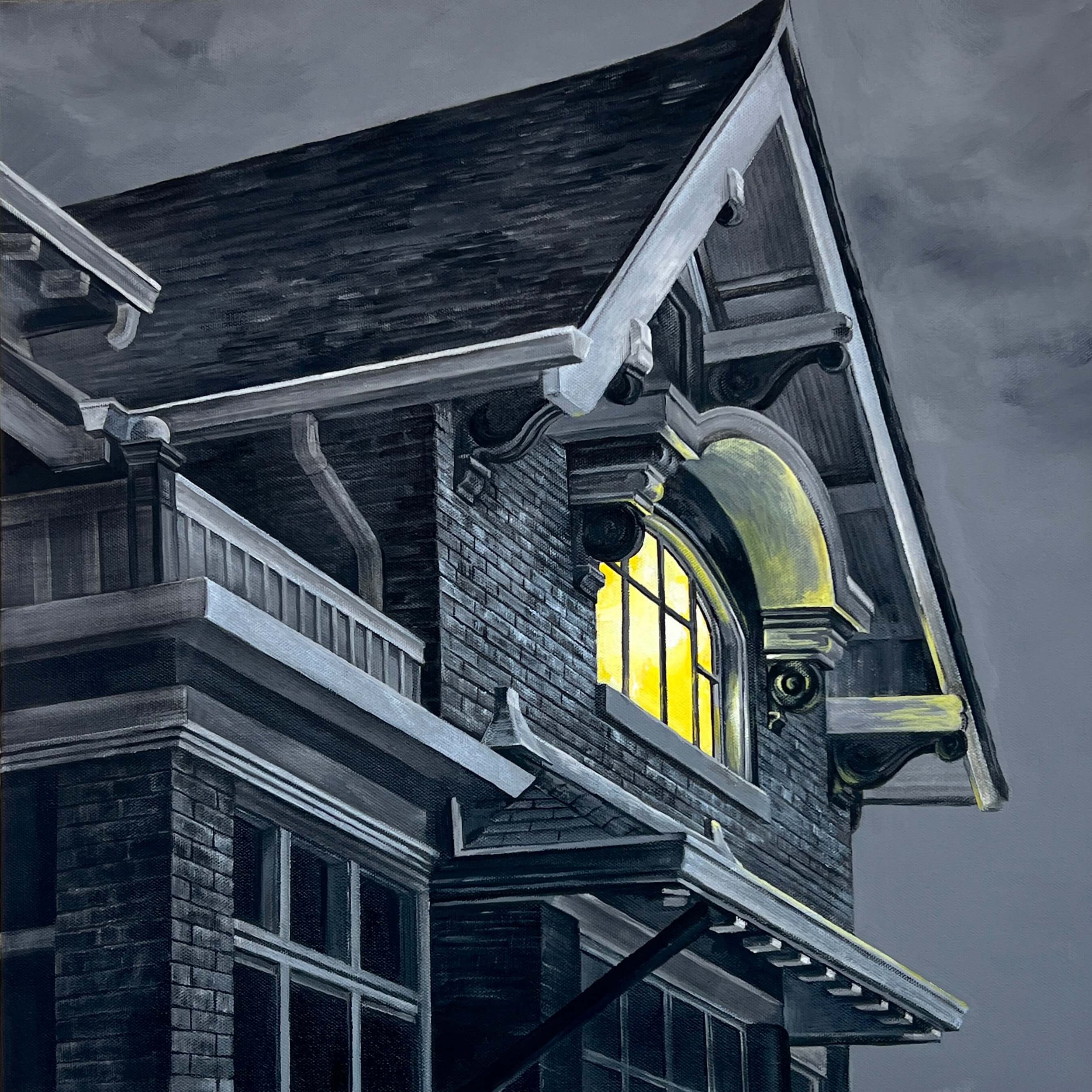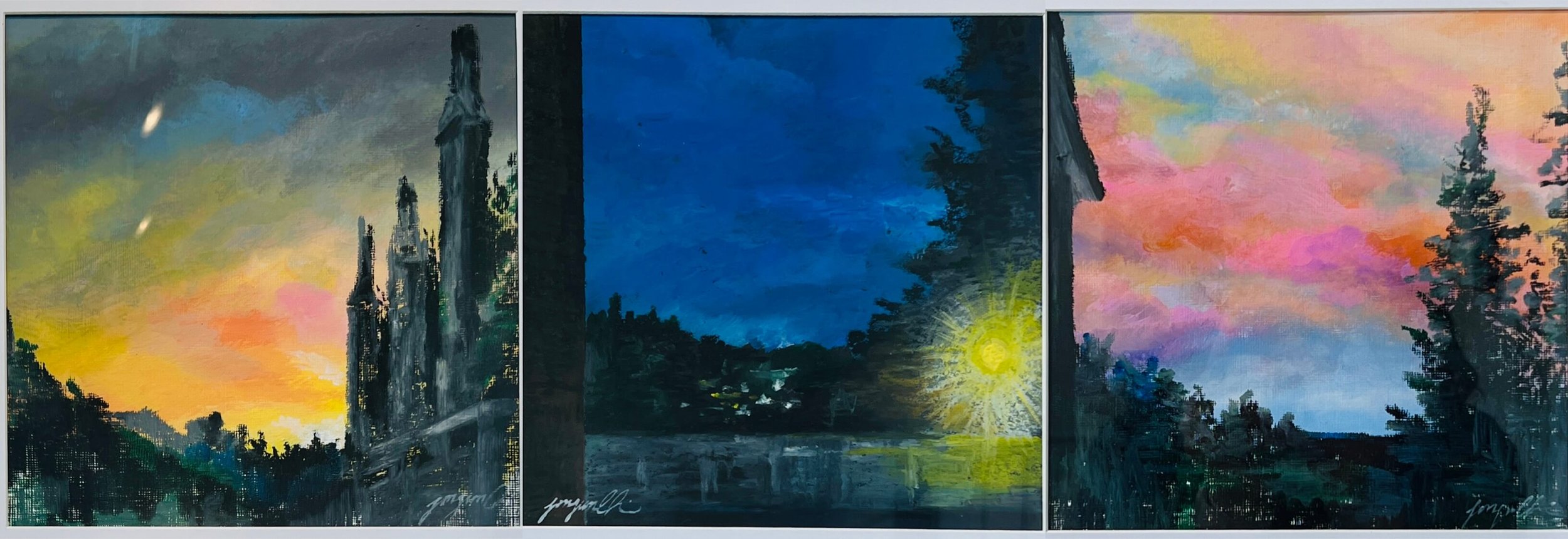Jong-un Choi
AQ is our series of hardcover catalogs celebrating extraordinary women artists. Available on Amazon. Visit the AQ Catalog Webpage to learn more.
AQ Volume IV artist Jong-un Choi made a positive and powerful impact on her career by exploring her artistic practice and continuing to build upon exhibitions and achievements. She has held 9 solo exhibitions, including the latest solo exhibition Dialogue with Light at The Art Federation, Lafayette, IN, in 2024. She has participated in many group exhibitions over the past 20 years, both nationally and internationally, and has won several exhibition awards. Choi’s recent paintings seek to experience ordinary life by using a variety of colors. In this creative process, she desires to present the symbiotic relationship with multifarious expressions that occupy one’s complex emotional space.
She is currently working as a foundational drawing coordinator in the School of Visual and Performing Arts at Purdue University. Choi received her BFA and MFA in Korean Painting from Ewha Woman’s University, Seoul, Korea, in 2004 and 2007, respectively, where she learned traditional Korean methods and experienced a variety of conventional materials. Making a specialty in Korean painting has been one of the best parts of her work because it has given her a strong identity while finding her own formative language. Choi earned another MFA in Studio Art from Purdue University in 2014, which allowed her to expand her knowledge and experience in the field. Choi has developed her professional teaching methods at Purdue University, where she teaches Basic Drawing, Drawing II, and Painting I. Her experiences, ranging from Korea to the United States, have honed her conceptual and technical skills.
www.jongunchoi.com
What inspired you to become an artist, and how did you decide to commit to this path?
It is such a cliché, but growing up, I would enjoy visualizing objects on any surface I was given. I found that I had a special sense of colors when I saw the colors in the world and started focusing on using colors. My desire to have images represent the actual world can be seen in the representation of colors, and this ultimately creates my visible cognition toward the creative process.
I like the concept that art allows artists to create anything in their artwork. It has been one of my joyful moments when my ideas and plans of art are visualized and built forms on a surface. I think this is the biggest inspiration and motivation.
Could you share the story or concept behind your recent work?
I used to be a city girl before coming to the USA. I settled down in a city that goes dark due to the lack of buildings and lights. In the soft dark evening, I could sense a variety of colors, and I gradually started gazing into a window lit up where I could see a story of our lives. In my work, the human figure does not exist in representation. Although the human figure is not directly visualized, there exists one person, myself, projected as a viewer. I wanted to add a lively moment with my visual attention to the visualization.
My use of color impressions is not only a mechanism of seeing but also a sensation or feeling that simultaneously activates my thoughts and cognitive mechanism. Most of the colors in the Dialogue with Light series involve my feelings about the surroundings.
What was the most challenging part of your path so far? How are you navigating this obstacle?
I always loved teaching art. If I got more chances to teach, I would love to do it no matter what. I love to see my students’ development and growth. Meanwhile, I had to earn money for a living and make art for myself as well. I sometimes spent lots of time teaching and couldn’t have a good balance with my art-making process. As time went by, I felt more comfortable controlling my work time and making art time.
In order to navigate obstacles, I sometimes focus on a minute task and complete it one by one. Instead of controlling the challenging part of my life, I usually focus on the things I can change and set small life goals.
What role does experimentation and exploration play in your artistic practice?
I was lucky enough to be an active visual artist at an early age before coming to the USA. I was always a goal-oriented person, and as a result, I participated in many solo and group exhibitions. I was restless yet reckless. I was always a fast learner and arrived first. However, I easily became stubborn and didn’t want to change once I settled down. I think deep inside I had a fear of stepping out of my comfort zone. It was such a big decision when I decided to study abroad. I felt like I was ready to change so many things. Ever since I started the grad program at Purdue University, I became a more open-minded person, started to embrace the discomfort, and got ready to learn new things. Every day has been my reward, and these changes help me to grow and develop my artistic style.
Do you have any start or stop rituals before creating?
Although I don’t have a specific plan for an exhibition, I have a tendency to create one and simulate how the entire exhibition would be. Once my whole pre-exhibition process launches, I start my work as a big plan. Another fun fact of my creating art is that I never stop one piece of art. Once I start, there is no going back. Just keep going.
What message do you hope your art conveys to the world?
I want the world to understand my vision. Sometimes they don’t get what I see, but that’s totally fine. I simply allow them to explore another visual perception for themselves. The seeing-of-a-something-that-is-seen in my surroundings thus implicates the visible world exceeding reality and is available to me perceptually as I explore the vision of spaces.
The special understanding of the color in my work is widely open to the viewers so that they can freely put their sentiments into the colors. Even if there is only color expressed, the viewer might also be able to imagine various senses of conceivable imagery from the reflected images I deliberately express. I intend that the colors I use be interpreted as many different images by different viewers, as well as the widely suggested internal reflections of them. Once elusive color reaches the viewer emotionally, the solid-colored space expands its own value.
Share a mantra or favorite quote that keeps you going.
Merleau-Ponty, who is best known for his critical studies of social institutions, said, “We must not, therefore, wonder whether we really perceive a world, we must instead say: the world is what we perceive.” I encounter innumerable visual images in my day-to-day life, and I pay attention to visible objects. My ideas basically come from an exploration of my surroundings based on my visual experiences. My visual perception is invariably an act correlated with objects.








